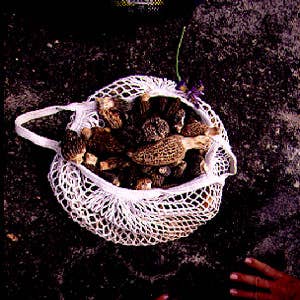
Finding Morels
•Morels are plentiful in the Midwest and the Pacific Northwest, but they can be found all over the United States.
•Depending on the location, morel season ranges from late March through early August.
•Morels prefer to sprout in old apple orchards and coniferous woods, and near dying elms. They also like burned-over spots. (Some entrepreneurs recently have been selling picking rights to burned areas.)
•Unless you're an experienced mycologist, it's unwise to go mushrooming—for morels or for any other variety—alone. The saw is true: There are old mushroomers, and bold mushroomers, but no old, bold mushroomers. Contact a local mycological society and go out with a supervised group.
•Yellow look-alikes include Verpa bohemica, which has a smaller, bell-shaped cap, and false morels such as Gyromitra esculenta, a highly toxic mushroom that has brain-shaped, chambered caps. Helvella lacunosa, a black look-alike, is nontoxic.
•Once you've gathered some morels, be meticulous about pre-paring them. They need to be cleaned thoroughly, as dirt, sand, insects, and even worms settle in their indentations or hollow
centers. Rinse them in several changes of water or soak them for not more than five minutes. Trim and discard stems and any dried or damaged parts.
Keep Reading
Continue to Next Story










